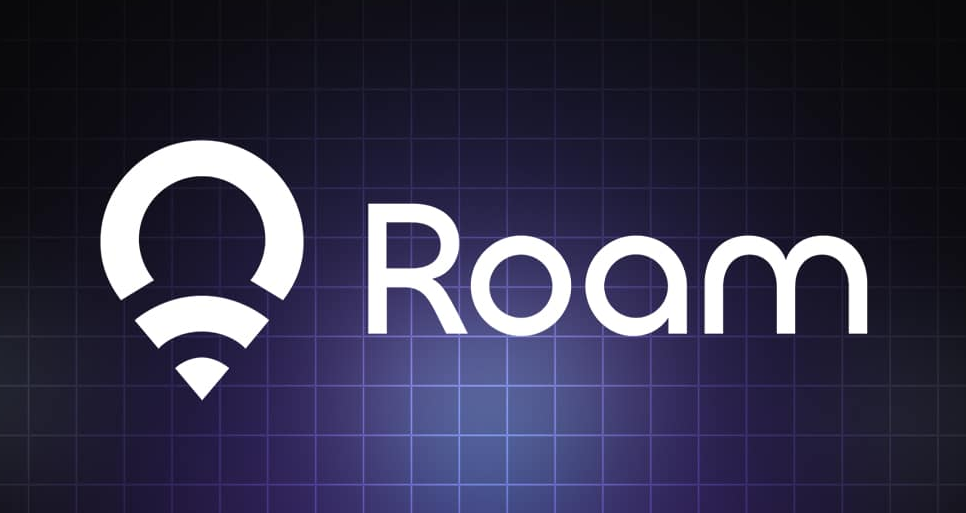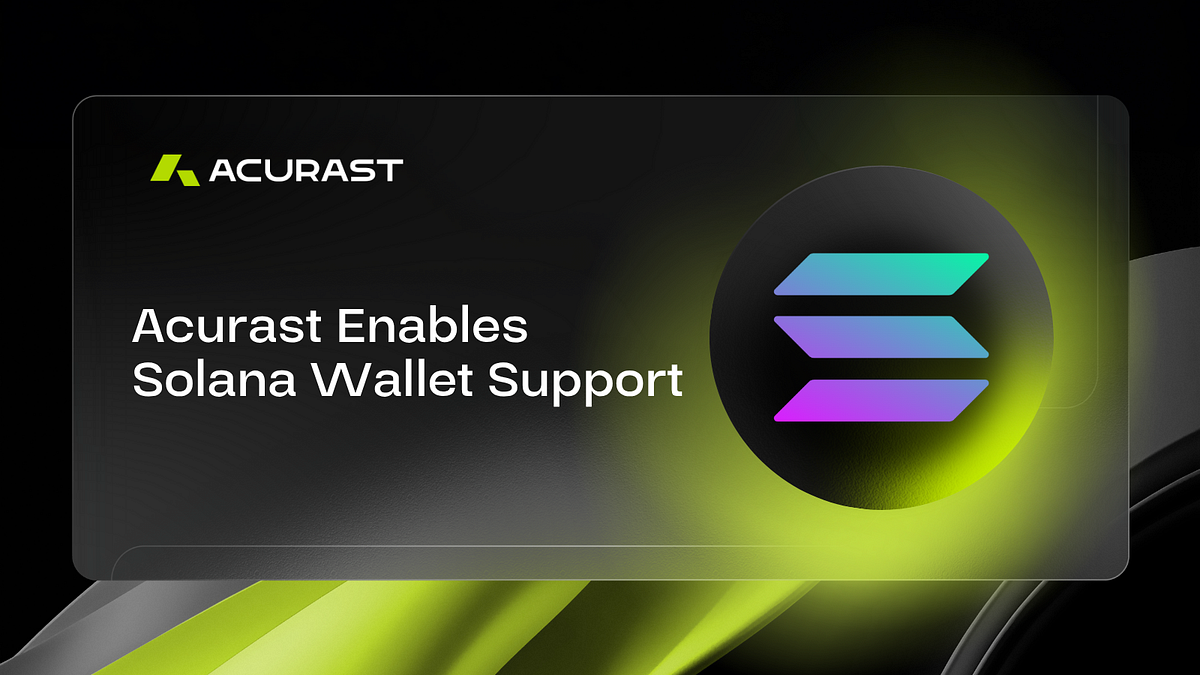Roam 成為 DePIN 領域的 AI 整合領導者
星期三, 一月 15, 2025 12:00 凌晨
5,190

DePIN(去中心化物理基礎設施網絡)領域正在經歷重大變革,Roam 正在成為其新領導者。與其他 DePIN 項目不同,Roam 尚未發行代幣,這使得普通用戶能夠參與並通過空投獲得潛在獎勵。DePIN 項目主要專注於資源整合,鼓勵用戶通過代幣激勵分享個人資源,如存儲空間和通信流量。DePIN 市場迅速擴張,目前擁有近 456 萬台設備,遍及 196 個國家,估值約為 71 億美元。Roam 擁有 118 萬台設備,在 DePIN 領域中脫穎而出,特別是在東南亞等加密貨幣行業蓬勃發展的地區。
Roam 在 Web3 和電信的交匯處運作,提供去中心化的無線網絡。用戶可以通過購買挖礦硬件或申請 eSIM 卡來參與 Roam,通過完成任務來獲得免費的數據流量。Roam 電信數據層至關重要,包含增強網絡基礎設施的模塊,激勵用戶參與並促進社區治理。Roam 的未來計劃包括加速實施這一數據層並整合 AI,這對於在不斷發展的 DePIN 領域中保持競爭優勢至關重要。
AI 與 Roam 的去中心化基礎設施的整合解決了 AI 項目面臨的關鍵數據挑戰。通過利用通信數據,Roam 旨在提供高質量的數據集,同時通過去中心化身份技術確保用戶隱私。這種創新方法不僅提高了可用於 AI 訓練的數據質量,還擴大了數據來源的範圍。普通用戶可以通過分享他們的 Wi-Fi 參與 DePIN,賺取積分並參加空投機會,從而降低進入門檻,促進社區在這一蓬勃發展的領域中的更廣泛參與。
Related News

2 天前
CUDOS 在 Consensus 2025:開創去中心化計算解決方案最近的 Consensus 2025 活動突顯了區塊鏈領域的一個關鍵轉變,強調去中心化基礎設施已成為必要,而不僅僅是一個新興趨勢。CUDOS 成為焦點,與 Web3 開發者和 AI 基礎設施團隊互動,展示他們致力於提供可擴展、無需許可且保護隱私的計算解決方案。重點很明確:消除經常伴隨集中式平台的守門人和不透明的定價結構,從而通過 CUDOS Intercloud 倡議促進真正的去中心化計算環境。
在整個活動中,各種主題浮現,特別是關於政策和監管的問題,預計將塑造區塊鏈創新的未來。主題演講強調了可編程穩定幣的日益重要性,這些穩定幣旨在在傳統金融系統之外運作,突顯了對可靠基礎設施的日益需求。黑客馬拉松大廳充滿了活動,AI 建設者和去中心化實體基礎設施(DePIN)項目探索去中心化推理、挖礦和數據服務的創新解決方案。參與者不僅專注於當前的發展,還關注 Web3 的未來以及 AI 在推動下一波創新中的角色。
CUDOS 在這個不斷演變的環境中脫穎而出,通過提供數字錢包認證的高性能 GPU 節點訪問,而無需帳戶或 KYC 流程。他們的跨鏈兼容性使其成為 AI、DePIN 和 Web3 原生應用的合適選擇。隨著對去中心化計算解決方案的需求不斷增長,CUDOS Intercloud 被定位為支持需要可擴展基礎設施的項目,而不受集中控制的限制。來自 Consensus 2025 的信息很明確:去中心化計算對於 AI、區塊鏈和數字主權的未來至關重要,而 CUDOS 正在這一轉型的最前沿。

3 天前
Amp 和 Aethir 在加密市場降溫中閃耀在加密市場降溫的情況下,Amp (AMP) 和 Aethir (ATH) 脫穎而出,均錄得顯著的 16% 價值增長。Amp 目前的價值為 0.0051 美元,受到強勁的牛市動能支持,並由關鍵的指數移動平均線 (EMA) 和 MACD、RSI 等指標的有利交易信號所支撐,儘管有過度買入的警告。與此同時,專注於 AI 驅動的區塊鏈解決方案的 Aethir 已飆升至 0.052 美元,突破了重要的阻力位並保持牛市樂觀,儘管過度買入的 RSI 表示交易者應保持警惕。
加密市場的分歧顯而易見,Helium (HNT) 面臨下行壓力,交易價格為 4.00 美元,且在關鍵的 200 日 EMA 下掙扎。如果突破 3.83 美元的 100 日 EMA 支撐,則可能面臨進一步下跌的風險。Amp 和 Aethir 與 Helium 的對比軌跡突顯了數字資產市場持續的波動性和創新,促使交易者在雄心與風險管理策略之間取得平衡。
當交易者在這些動盪的水域中航行時,Amp 和 Aethir 的韌性強調了即使在市場停滯中也有增長的潛力。建議投資者密切關注關鍵技術指標,特別是 EMA 和 RSI 水平,以識別最佳進入點並有效管理風險。這些項目的持續發展反映了加密貨幣領域的動態特性,創新不斷推動著興趣和投資機會。

3 天前
氦氣:用去中心化網絡革新電信業氦氣正在電信行業引起轟動,通過利用加密貨幣來建立可能是美國最具顛覆性的網絡。氦氣最初作為物聯網(IoT)倡議開始,現在已轉變為全球最大的去中心化無線網絡。在去中心化物理基礎設施網絡(DePIN)運動的支持下,氦氣正在重新定義基礎設施的建設方式。氦氣的協議負責人Abhay Kumar強調了公司的使命:創建促進創新商業模式的無線基礎設施。這一演變使氦氣能夠擴展其服務,包括IoT和5G移動網絡,鞏固了其在DePIN領域的地位。
從連接設備到連接人類的轉變對氦氣來說至關重要。氦氣移動的推出,一個新的運營商,體現了這一轉變。在美國,用戶可以訪問免費的手機計劃,或選擇每月僅需15美元的有限計劃。Kumar將這種可負擔性歸因於氦氣獨特的協議,該協議顯著降低了運營商的帶寬成本。通過利用氦氣網絡,運營商每千兆字節僅需支付50美分,這與傳統定價模型形成了鮮明對比。這種成本效率主要得益於DePIN模型,該模型激勵個人和企業安裝無線節點,如5G無線電,以換取加密貨幣獎勵。
氦氣的去中心化基礎設施方法已成為DePIN潛力的領先範例。Kumar指出,該公司在建立這一模型之前的時機非常好,因為這一模型尚未被廣泛認可。通過允許當地商店業主為網絡做出貢獻,氦氣不僅提高了客戶滿意度,還使運營商能夠擴大其覆蓋範圍。這一模型的合作性質使所有參與方都受益,展示了去中心化網絡如何革新電信行業並創造可持續的商業實踐。

3 天前
加密市場復甦:Theta、Gala 和 PayFi 領軍加密市場正在經歷復甦,Theta、Gala 和 Sandbox 等代幣顯著增長,重新點燃了對元宇宙和 GameFi 部門的興趣。Theta 網絡的價格上漲了 37%,這得益於與南洋理工大學的合作,開發 EdgeCloud AI 基礎設施。這一合作旨在提升去中心化視頻流媒體和 NFT 平台,使 Theta 成為 AI 驅動的 Web3 服務的領導者。儘管價格略有回調,但整體趨勢依然看漲,反映出投資者信心的增強。
Gala Games 也在樂觀的浪潮中,GALA 代幣在與白宮的高調合作後飆升近 47%,該合作旨在創建一個基於 Web3 的復活節尋蛋遊戲,計劃於 2025 年推出。這一意外的合作不僅提升了 GALA 的價格,還引發了對 GameFi 部門的興趣,導致加密市場的廣泛上升。持續的增長和高購買興趣表明,投資者之間的強勁復甦和新熱情,展示了 Gala 在主流採用中的潛力。
在這些發展中,PayFi 正在成為加密領域的一股變革力量。像 Remittix 這樣的平台正在重新定義跨境支付,通過實現即時的加密貨幣到法幣轉換,而無需用戶擁有廣泛的加密知識。PayFi 支持超過 50 種加密貨幣對,並提供友好的用戶界面,準備徹底改變現實世界的金融。隨著加密市場的持續發展,對像 PayFi 這樣的實用創新的關注表明,2025 年可能會標誌著向日常金融交易中主流採用區塊鏈技術的重要轉變。

3 天前
探索2025年RWAs、DePINs和DeAI的增長在2025年5月,現實世界資產(RWAs)的代幣化激增,達到225億美元的估值,預計到年底可能達到500億美元。這一增長主要歸因於去中心化金融(DeFi)與傳統金融資產(如不動產和政府債券)的日益融合。值得注意的是,像貝萊德(BlackRock)和高盛(Goldman Sachs)這樣的機構投資者在這一擴張中發揮了關鍵作用。美國證券交易委員會(SEC)也通過舉辦代幣化圓桌會議,顯示出對該領域的承諾,這表明RWAs的監管環境積極向好。分析師預測,RWAs市場到2030年可能增長到驚人的10萬億美元,突顯其在未來幾年主導加密貨幣領域的潛力。
與RWAs一起,去中心化物理基礎設施網絡(DePIN)市場預計到2028年將達到3.5萬億美元。DePIN旨在通過利用區塊鏈技術創建去中心化的計算、存儲和連接網絡來徹底改變物理基礎設施。這種創新方法可能會顛覆包括電信和物聯網在內的各個行業。像Theta Network和Akash Network這樣的領先項目正在前沿,為AI工作負載和物聯網應用提供具成本效益的解決方案。對去中心化能源網格和智慧城市的日益關注進一步強調了DePINs在Web3演變中的重要性。
去中心化人工智慧(DeAI)領域也在上升,將區塊鏈與AI結合,以促進透明和無審查的生態系統。隨著AI和RWA加密代幣市場的估值已超過650億美元,DeAI有望實現顯著增長,這得益於去中心化計算的進步。像SingularityNET和Fetch.ai這樣的平台正在引領創建去中心化AI模型。RWAs、DePINs和DeAI之間的相互聯繫表明了一種協同關係,這可能會重新定義2025年加密周期的未來,前提是能有效解決可擴展性和監管障礙等挑戰。

4 天前
Acurast 整合 Solana 錢包支持以增強去中心化計算的可及性Acurast 是一家總部位於瑞士楚格的先鋒去中心化計算網絡,最近宣布在其 Android 和 iOS 應用程序中整合 Solana 錢包支持。這一重要更新旨在簡化新貢獻者的入門過程,允許他們使用 Phantom 等錢包連接智能手機,提供計算能力並獲得獎勵。通過這一增強,Acurast 不僅擴大了其可及性,還在 web3 生態系統中接觸到更廣泛的受眾。聯合創始人 Alessandro De Carli 強調了去中心化計算中包容性和易於訪問的重要性,表示未來必須快速且用戶友好。
Acurast 的核心使命是通過將日常智能手機轉變為安全的去中心化計算節點來重新定義雲計算。利用現代移動設備中的可信執行環境(TEE),Acurast 提供了一個可擴展和保密的計算基礎設施,獨立於集中數據中心運行。擁有超過 65,000 部活躍手機為網絡貢獻並處理超過 2.5 億筆交易,Acurast 已經建立了自己作為全球最去中心化的計算網絡,展示了社區驅動技術的潛力。
Solana 錢包的整合特別值得注意,因為 Solana 以其快速和成本效益高的區塊鏈生態系統而聞名,並且用戶基礎不斷增長。這一發展使得用戶能夠快速將他們的錢包連接到 Acurast Hub,幾分鐘內完成設備的入門,並安全地提供計算資源。Acurast Core 和 Acurast Lite 的最新版本現在已在 Play Store 和 App Store 上提供,讓用戶比以往任何時候都更容易加入這一朝向韌性和社區驅動的計算網絡的運動,特別是在傳統雲基礎設施存在漏洞的背景下。
註冊以獲取最新的DePIN新聞和更新